Showing 25–36 of 166 results

This work highlights the Dharmashastra essentials by listing the major authors with their biographies, titles and their dates of composition, published editions and commentaries. It shows how Dharmashastra works have influenced the Indian way of life.
Dharmashastra is not just a corpus of scriptural texts. It is rather a genre, in its own right, of writings comprising prescriptive codes of righteous conduct in different spheres: whether familial, societal, ritualistic, legal, or even political. For the first time, this book offers a quintessential view of the Dharmashastra (Smriti) literature. Which today, along with its digests and commentaries, looks like a vast reservoir of literary works that have been accumulating over the centuries since their legendary beginnings with Manu. Designed primarily for reference, this Companion is styled and structured to bring forth the Dharmashastra-essentials in the quickest time. Listed here, alphabetically, are the major authors with their biographical sketches. And, these besides, the titles, together with descriptive details of their thematic content, dates/probable dates of their composition, published editions and commentaries their upon. Also included here are as many as 12 appendices which, in their totality, embody Dharmashastra-based information on geography, flora and fauna, mixed castes/tribes, neo-Smriti schools, and the kind of relation Smriti literature has with the Mahabharata, Puranas, and Tantra, among other aspects. Professor Banerjis book not only tries to show how Dharmashastra works are representative of the ancient/medieval political, social and cultural milieus, but is also a painstaking attempt to gauge their influence in conditioning the Indian way of life and psyche. Supported by an extensive glossarial index of Smriti literature, it is indisputably a valued companion to the Dharmashastra-specialists, Indologists and the scholars of ancient/medieval Indian sociology.
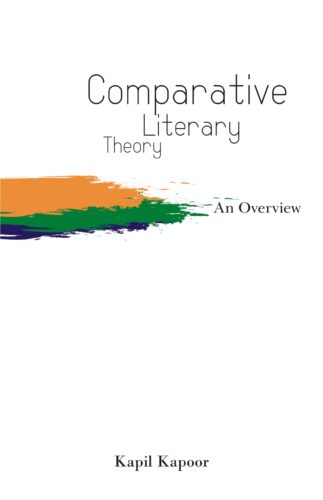
This book delves deep into the growth of poetics, theory of literature, literary artefacts, aesthetics of literature as an art form, and dramaturgy and philosophy of literature. Cultures have given forms as their typical expressions for India great epics, for Greece tragedies, and for England lyrics.
“Two cultures of the world — Greek and Indian — have nourished literature. While the contemporary Western thinking is rooted in Greek thought, especially of Socrates, Plato and Aristotle, and percolated down to the modern European languages with the advent of Christian thought, the multilingual Indian literary tradition has its base from the classical Tamil, Pali, Prakrt and Sanskrit.
Though cultural specificity marks these two traditions off from each other, the universal human condition that finds expression in all literatures binds them together. This book delves deep into the growth of poetics, theory of literature, literary artefacts, aesthetics of literature as an art form, and dramaturgy and philosophy of literature.
Cultures have given forms as their typical expressions — for India great epics, for Greece tragedies, and for England lyrics. Similarly, different ages of a culture find expression in different forms — Elizabethan age of England in lyrics, sixteenth-seventeenth centuries in drama, eighteenth century in prose, and nineteenth century in novel. India’s genius is in epics and its expression unfolds in sravya-preksa compositions, being singable poetry as its preferred form.
This book must serve pretty useful for students and teachers of literature. Also, an invaluable collection for researchers in literature.”

This book delves deep into the growth of poetics, theory of literature, literary artefacts, aesthetics of literature as an art form, and dramaturgy and philosophy of literature. Cultures have given forms as their typical expressions for India great epics, for Greece tragedies, and for England lyrics.
“Two cultures of the world — Greek and Indian — have nourished literature. While the contemporary Western thinking is rooted in Greek thought, especially of Socrates, Plato and Aristotle, and percolated down to the modern European languages with the advent of Christian thought, the multilingual Indian literary tradition has its base from the classical Tamil, Pali, Prakrt and Sanskrit.
Though cultural specificity marks these two traditions off from each other, the universal human condition that finds expression in all literatures binds them together. This book delves deep into the growth of poetics, theory of literature, literary artefacts, aesthetics of literature as an art form, and dramaturgy and philosophy of literature.
Cultures have given forms as their typical expressions — for India great epics, for Greece tragedies, and for England lyrics. Similarly, different ages of a culture find expression in different forms — Elizabethan age of England in lyrics, sixteenth-seventeenth centuries in drama, eighteenth century in prose, and nineteenth century in novel. India’s genius is in epics and its expression unfolds in sravya-preksa compositions, being singable poetry as its preferred form.
This book must serve pretty useful for students and teachers of literature. Also, an invaluable collection for researchers in literature.”
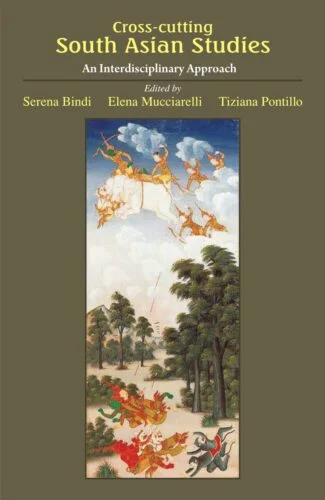
This volume deals with different issues related to religious practices and institutions in South Asia. It further seeks to substantiate the well-known opposition between the so-called orthodox sovereignty and the heterodox one, of which the so-called vratya-power seems to be a prime example.
This volume, Cross-cutting South Asian Studies: An Interdisciplinary Approach focuses on two themes that are central to Indological studies: religious practices and heterodox sovereignty.
The first part of this volume The Indian Ocean of Religious Practices: Past and Present deals with different issues related to religious practices and institutions in South Asia. These contributions share a similar theoretical perspective on religion: they all highlight, in various ways and through different disciplinary approaches, how, in order to fully understand religious practices and their inherent dynamics, it is essential to consider the power relations that continually imbue and shape them.
The second part Kings, Priests and Prominent Roles Interpreted through the Visual, Literary, Speculative, and Technical Indian Arts seeks to substantiate the well-known opposition between the so-called orthodox sovereignty and the heterodox one, of which the so-called vratya-power seems to be a prime example. Therefore, the target of the relevant contributions consists in focusing on different contexts where the king or chieftain, or merely the patron of the sacrifice, gains his temporary pre-eminence in an agonistic way which includes an important non-permanent ascetic dimension.

Darsanamala written in Sanskrit is one of the major works of Narayana Guru. Consisting of 100 verses divided into 10 chapters of 10 verses each, each chapter gives a different vision, complete in itself. The author here adopts the system of looking at non-dual, Ultimate Reality or Brahman from ten different points and a real seeker can intuitively perceive the non-dual Brahman within himself, he being inalienable from it.
Darsanamala written in Sanskrit is one of the major works of Narayana Guru. Consisting of 100 verses divided into 10 chapters of 10 verses each, each chapter gives a different vision, complete in itself. The author here adopts the system of looking at non-dual, Ultimate Reality or Brahman from ten different points and a real seeker can intuitively perceive the non-dual Brahman within himself, he being inalienable from it.

Studying European theories of the sublime particularly against contemporary critical uses of the term, the study maintains that the Brahman is one of the most fully developed sublimes. It analyses the relationship of a devotee, with his God when the latter is incapable of representation.
The last two decades of the twentieth century have been marked by an immense revival of interest in the sublime, yet past studies have used Western texts as their archives. This book dramatically shifts the focus by examining a major instance of an Indian sublime: the Brahman. Mishra examines European theories of the sublime, reads them off against contemporary critical uses of the term (notably by Lyotard and Paul de Man) and proposes that the Hindu Brahman constitutes an instance of one of the most fully developed of all comprehensive theory of both the Indian sublime and Indian devotional verse. The book offers a highly original interpretation of one fundamental problem in Indian cultural history: how does a devotee establish a relationship with God (Brahman) when God is ultimately incapable of representation? Mishra brilliantly exposes this problem by introducing the theme of the sublime and shows how the problem has been confronted across a range of central Hindu texts covering a large panorama of historical time and several Indic languages.
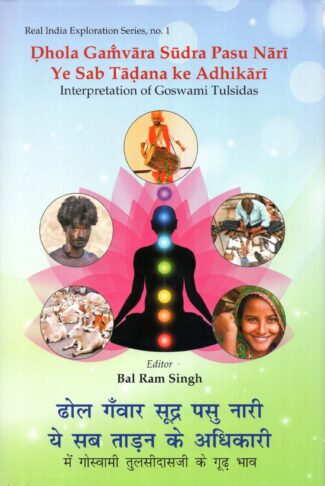
This book presents a proper meaning of the Ramcharitmanas chaupai, Dhola gamvara sudra pasu nari , ye sab tadana ke adhikari using the actual meaning of the word, tadana, in Avadhi language, and by delving into the deep philosophical references of the Pancabhutas, ether, air, fire, water, and earth of the Samkhya and Vaishesika darshanas, as intended by Goswami Tulsidas.
This book presents a proper meaning of the Ramcharitmanas chaupai, Dhola gamvara sudra pasu nari , ye sab tadana ke adhikari using the actual meaning of the word, tadana, in Avadhi language, and by delving into the deep philosophical references of the Pancabhutas, ether, air, fire, water, and earth of the Samkhya and Vaishesika darshanas, as intended by Goswami Tulsidas.
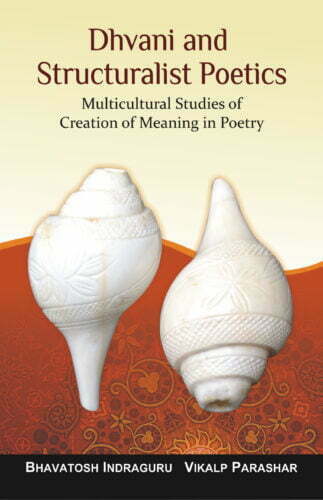
The book is an in-depth study of dhavni, the well established Indian critical system and the Western structural poetics. It also examines the independent universalisation and necessity to explicate words, letters and syllables for the sake of meaning formation.
Dhvani and structuralist poetics emerge as the two primary theoretical frameworks in which the reality of inquisition and propagation of comprehensibility and creativity of the artistry could be well-conceived, exposed and implied. In each of the two systems, the maturity of conception and universality of expression of the content, context and the medium are quite remarkable.
The book is an in-depth study of dhvani, that is, the Indian critical system developed around the eighth century ce, and structuralist poetics the Western critical premise, commencing with Ferdinand de Saussure’s Course in General Linguistics that substantiate an adequate methodology to understand the formation of categories, contents, constructs and mediums as a necessary corollary to an analytical procedure that would bring about transformation. It examines the independent universalisation of sabda, pada, varna, vakya, bhava, vibhava, anubhava, sthayibhava, sancaribhava, alambana and uddipana for the sake of an absolute artistic formation, especially as propounded by Anadavardhana, the progenitor of dhvani system. It then delves deep into the structuralist poetics, following Saussure, Barthes, Jakobson and others, that focuses on the need and necessity to explicate words, letters, syllables and even otherwise an experience so as to create a valid notation, out of each of these, for the sake of totality in the meaning formation.
The study has immense significance owing to the fact that it promotes proper understanding and enjoyment of literature. Moreover, the fact is that Indian and the Western scholarships have not paid much attention to the subject discussed herein. The volume, therefore, will be of an immense interest to scholars and students of poetics and literature in general.

This newly-edited edition of D?ks??prak??a brought out jointly by DK Printworld and The Tantra Foundation, New Delhi is an authentic compilation based on some of the authoritative Tantras such as the ??rad?tilaka and the Tantras?ra of ?gamav?gi??a. The short and succinct work covers a wide range of ta?ntric topics such as rites associated with ta?ntric form of initiations, the qualities of guru and the disciple, activation of ta?ntric mantras by means of the esoteric rituals and worship of deities.
???????? ??? ?????????? ?? ???? ?? ?? ????????? ?? ?? ?????????? ??? ?????? ??????? ??? ?? ? ?? ??????? ??????? ????? ?? ?????? ???? ?? ?????? ??????? ?? ?????? ?? ???????? ?????? ?? ????????? ?? ???? ?? ????? ???? ?? ?????? ?? ????? ?????????? ?? ?? ????? ?? ?? ??? ? ????????? ??? ?????????-??????? ?? ???????? ?? ???? ?? ????? ???? ??? ??? ?? ?????? ?? ????? ?????? ??? ???? ???? ?? ?? ????? ???? ?? ? ???? ?????-???? ?????? ??????????? ??? ???? ?? ???? ??????? ?????? ?? ?????? ?? ???? ???????????? ???? ??? ? ??? ??????? ?? ??????? ?? ?? ??????? ????? ???????? ?? ??????? ?? ???? ?????? ?? ?????? ???????? ?? ??????? ?? ??????-?????, ?????????-?????, ?????????? ??? ?? ?????-??????? ????? ???? ??? ??????? ?? ?????? ????? ??????? ???? ??? ?? ??????? ?????? ?????? ?? ? ??? ??????-????????? ?? ????? ???? ??? ?????????? ???????? ??? ????????? ??? ????? ??? ???????????? ?? ??????????? ?? ?????? ?????? ???????????? ?? ?? ?? ?????????-???? ?? ????????? ?????? ???? ?? ??????? ?? ????????, ?? ????????? ?????? ????? ?????? ?? ? ???????????? ???? ?? ?????? ??? ?? ???????? (????????) ??? ???????? ?? ? ????? ?????? ??? ????-????? ?????, ???????????-?????, ??????-?????????, ?????? ?? ?????????? ?? ??????, ?????? ?? ?? ???? ?? ?????? ??? ????-??????? ?? ?????? ??? ???? ????????, ???????? ?? ?????????-??????, ??????? ????????? ?? ??????, ??????-????? ?? ???? ??? ?? ????? ??? ??????? ?????? ??? ?????? ?? ????, ????? ?????? ??? ???????? ?? ??????? ?? ????, ?????? ?????? ??? ???????? ???? ?? ????, ???? ?????? ??? ??????-??????, ????? ?????? ??? ????-??? ?? ?????? ??? ?????????? ???????? ?? ?????, ????? ?????? ??? ????? ???? ?? ?????? ?????? ?? ??????????? ?? ?????, ????? ?????? ??? ?????????????, ??????? ?? ?????????? ?? ???? ??? ??? ?????? ??? ?????? ??? ?? ???????????-???? ??? ?? ????? ??? ?? ?????? ?? ?? ?????? ???, ????? ?? ?????? ????????? ?? ?????????? ?? ??? ??? ?????? ?? ?
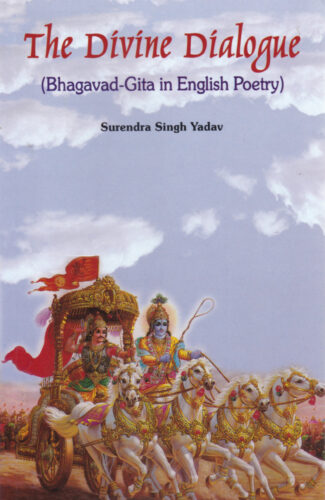
Dr. Yadav here captures the rich meaning of the Bhagavad Gita and presents it in a condensed form with a rare clarity. In a simple and fluent language, he brings out the glory of Lord Krishna and discusses the essence of the yoga of knowledge, karma yoga, the yoga of devotion and the yoga of meditation.
Recognising the significance of the Bhagavad Gita in the present times as a guide to understanding the life and attaining spiritual fulfilment, Dr. Surendra Singh Yadav conveys here its enduring message in the form of beautiful verses in English. In a simple and fluent language, the verses capture the rich meaning of the Gita and present it in a condensed form with a rare clarity. Much like his rare book in Hindi, titled, KrishnaArjuna Samvad, this work in English, brings out the glory of the Lord Krishna and gives out the essential substance of the yoga of knowledge, the karma yoga, the yoga of devotion and the yoga of meditation. The book will make essential reading for all as the Gita is concerned with the human quest in the battle field of life and provides the guidelines for a victory therein.
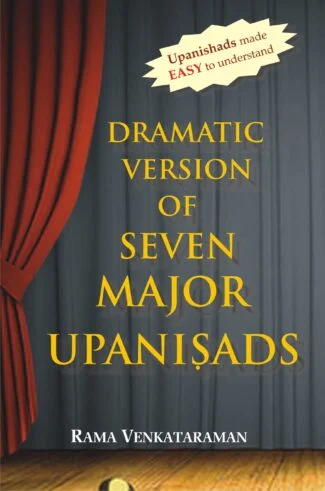
This book an English translation of the Tamil text expounds the wisdom contained in seven of the principal Upanishads in the style of short dramas. English transliteration and meanings of the Sanskrit verses are also included. The language is simple to follow which makes the Upanishads easily understandable by even a layman.
The Upanishads reveal the nature of true vidya: it is the knowledge which leads to the understanding of Brahman which alone is the Reality in the world of appearances. The dramas by Shri Mani Iyer based on the Upanishads render the meaning of the Upanishads in an interesting and captivating manner so that a wider audience can gain from the Upanishadic insight.
This book presents an English translation of Mani Iyers seven Upanishadic dramas, originally in Tamil, and includes English transliteration of the original Sanskrit verses. The dramas pertain to seven of the major Upanishads: Kena, Ishavasya, Prashna, Mundaka, Mandukya, Taittiriya and Katha. With reference to each drama, there is an introduction that reveals the major questions raised by the Upanishad, the manner in which the play proceeds, the nature of the story, its characters, and the conclusion of the play. The translation is simple to follow and possesses a rare clarity.
Because of the simple language and the clear meanings of the Upanishadic verses, this book will be valuable to readers in general, students in particular, and to those interested in knowing what our Upanishads contain and intend to convey.

This book an English translation of the Tamil text expounds the wisdom contained in seven of the principal Upanishads in the style of short dramas. English transliteration and meanings of the Sanskrit verses are also included. The language is simple to follow which makes the Upanishads easily understandable by even a layman.
The Upanishads reveal the nature of true vidya: it is the knowledge which leads to the understanding of Brahman which alone is the Reality in the world of appearances. The dramas by Shri Mani Iyer based on the Upanishads render the meaning of the Upanishads in an interesting and captivating manner so that a wider audience can gain from the Upanishadic insight.
This book presents an English translation of Mani Iyers seven Upanishadic dramas, originally in Tamil, and includes English transliteration of the original Sanskrit verses. The dramas pertain to seven of the major Upanishads: Kena, Ishavasya, Prashna, Mundaka, Mandukya, Taittiriya and Katha. With reference to each drama, there is an introduction that reveals the major questions raised by the Upanishad, the manner in which the play proceeds, the nature of the story, its characters, and the conclusion of the play. The translation is simple to follow and possesses a rare clarity.
Because of the simple language and the clear meanings of the Upanishadic verses, this book will be valuable to readers in general, students in particular, and to those interested in knowing what our Upanishads contain and intend to convey.
| There are no products |